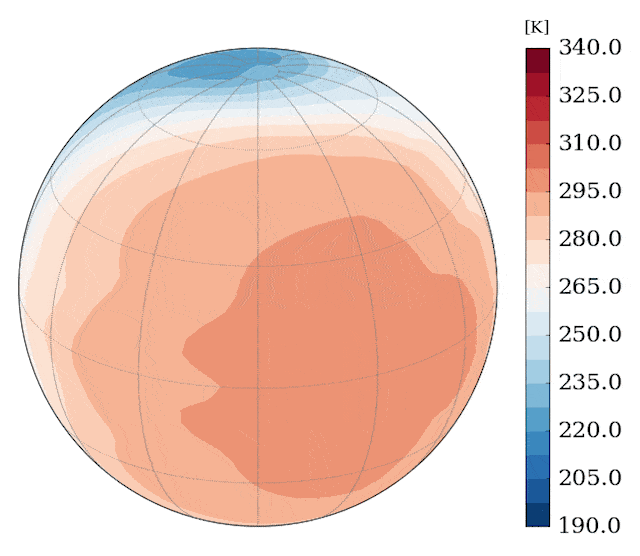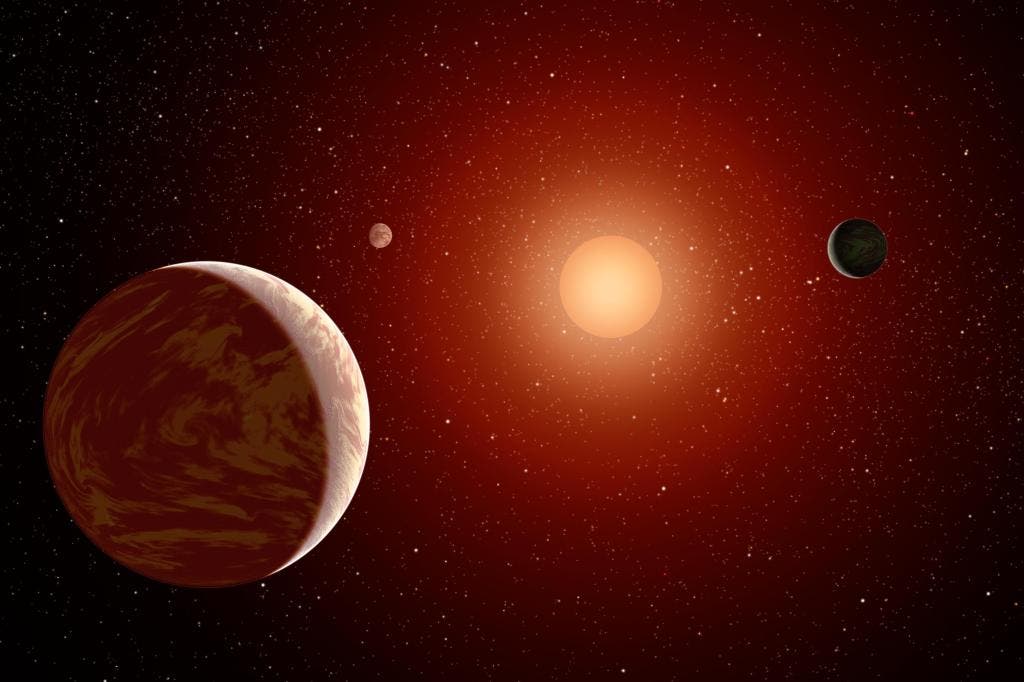Astronomers hunting for habitable Earth-like planets now believe that the best place to look is not around stars like our Sun, but rather around smaller, cooler stars—orange and red dwarfs. These are by far the most abundant stars in our galaxy, and all of them have at least one exoplanet.
Red Dwarfs are smaller and cooler than our Sun, ranging from a mass of of 0.075 solar masses to about 0.50 solar masses. Red dwarfs are by far the most common stars in the Milky Way galaxy and in the entire Universe, but due to their low luminosity they are pretty hard to observe. It’s estimated that some 75 percent of all stars in the universe are red dwarfs, and all of them host planets.
The habitability of red dwarfs has been discussed many times, and is still a matter of debate. Of course, knowing if the most common stars in the universe can host habitable planets is a big deal. Among the problems raised against habitability is the so called tidal locking: just like our planet sees only one side of the moon at all times, so do the red dwarfs; they only see one side of the planet, which means that one side is likely a desertic landscape, while the other is a frozen nightmare.

Above: How heat is distributed on a spinning planet versus a rotationally locked one. Image via Popular Mechanics.
This happens when the planet is close to its star, as planets would have to be closer to red dwarfs to be habitable. Naturally, in this case the chances for life are much smaller (though it’s not completely impossible). However, this new study challenges this idea, and claims that not all planets are engaged in tidal locking.
The simple existence of an atmosphere, researchers argue, is enough to ensure that the planet is rotating and revolving around its star, making it much more likely to be habitable. According to Jérémy Leconte, the theoretical astrophysicist at the University of Toronto who lead the study, this means that we may have already discovered many habitable planets – we just don’t know it yet.
“Planets with potential oceans could thus have a climate that is much more similar to the Earth’s than we’ve previously expected,” he says.
So how does the atmosphere play into this problem? Jeff Coughlin, a SETI astronomer working with Kepler planet-hunting mission, who was not involved in the study explains it like this:
“On Earth, light from the sun is what drives the weather in our atmosphere. And that weather, in the form of wind, constantly pushes against the planet—running into mountains, for example, or creating waves on the ocean. This friction is deposited in the rotation rate of our planet, helping to speed it up or slow it down.”
Astrophysicists have known this for quite a while, but according to initial calculations, the atmosphere would have to be incredibly massive to have this impact. We have a good case study very close to us: Venus. Venus’ atmosphere is just big enough to escape lockup, and Venus’ atmosphere is absolutely huge – about 90 times heavier than our own. So scientists discarded the idea.
But when Leconte and his team ran simulations to see how the atmosphere would play into gravitational locking, they surprisingly found that thinner atmospheres actually have a larger rotational effect on their planets. This may seem counterintuitive, but it happens because a thinner atmosphere scatters less sunlight. This creates extra heat which in turn creates a stronger atmospheric tide (a bulging of atmosphere, much like our ocean’s tides). This results in a stronger planetary rotation. If Venus were to have an atmosphere like Earth’s, it would spin 10 times faster.
Armed with the results of this model, the team showed that Earth-sized planets can spin quite healthily around a red dwarf if they have an atmosphere.
“More and more, we’re discovering that there’s a lot of ways to have a very nice, habitable planet around dwarf stars,” Coughlin says. But there’s something more at play here. “We really shouldn’t be so narrow-minded in our assumptions about what types of planets could or could not be habitable,” he says. Coughlin says that even a locked-up rotation is not necessarily a killer for a planet in terms of habitability—strong winds could help smooth out the temperature between the two sides.
It would be nice if we’d be able to confirm this model with some observed information, but until that, the results of this study are pretty convincing.
“Every time we’ve made simple assumptions about habitability,” he says, “we find out new ways why and how they don’t apply.”
Journal Reference: Jérémy Leconte, Hanbo Wu, Kristen Menou, Norman Murray. Asynchronous rotation of Earth-mass planets in the habitable zone of lower-mass stars. Science DOI: 10.1126/science.1258686










